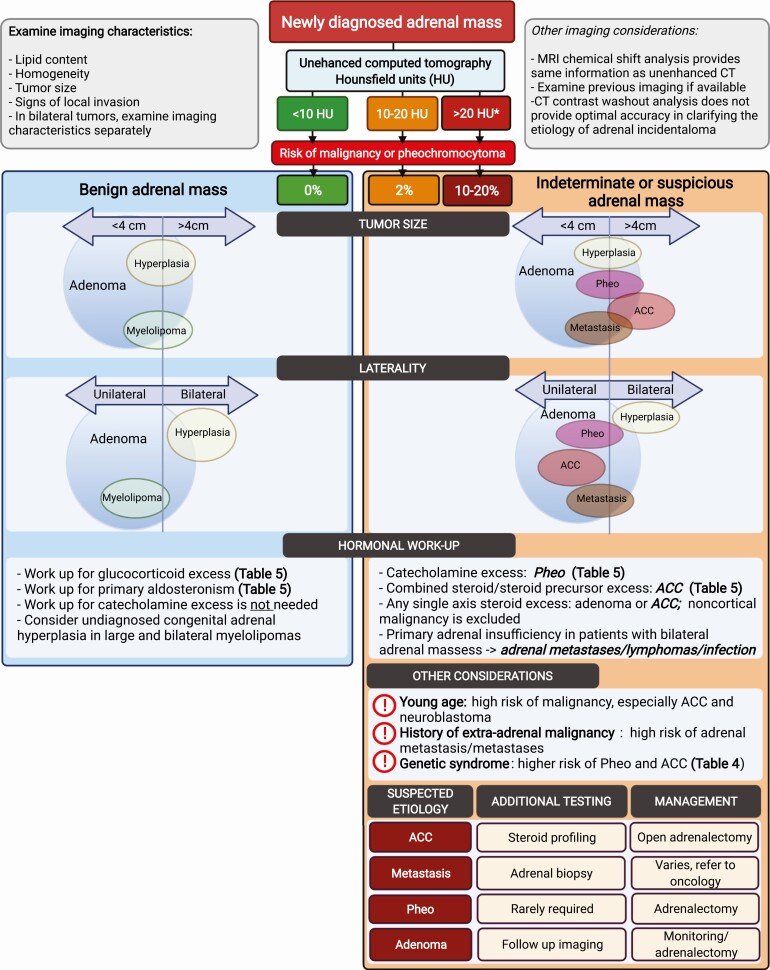Figure 2.
Adrenal incidentaloma work up: evaluation for etiology. In a patient with newly diagnosed incidental adrenal mass, imaging characteristics should be examined. Risk of malignancy and/or pheochromocytoma is stratified based on the unenhanced computed tomography attenuation of the adrenal mass (measured in HU). If HU of a homogeneous adrenal mass is <10, the benign adrenal mass pathway should be followed. If the HU of a homogeneous adrenal mass is >10, or the mass is heterogeneous, the pathway for the indeterminate or suspicious adrenal mass should be followed. Tumor size and laterality of the adrenal mass should be examined next. The size of the circle is proportional to the prevalence of each entity. The line that divides the tumor size (<4 cm and >4 cm) and laterality (unilateral vs bilateral) further indicates the proportion of each tumor entity falling within each cutoff. Further considerations in the indeterminate/suspicious adrenal mass pathway include the (1) findings of the hormonal work up, (2) demographics, (3) history of extra-adrenal malignancy, and (4) presence of the genetic syndrome. Additional testing and management are suggested based on suspected etiology. Abbreviations: ACC, adrenocortical carcinoma; CT, computed tomography; HU, Hounsfield units; MRI, magnetic resonance imaging; Pheo, pheochromocytoma. *If the tumor is heterogeneous on imaging, proceed with the pathway for “>20 HU.” Created with BioRender.com.

